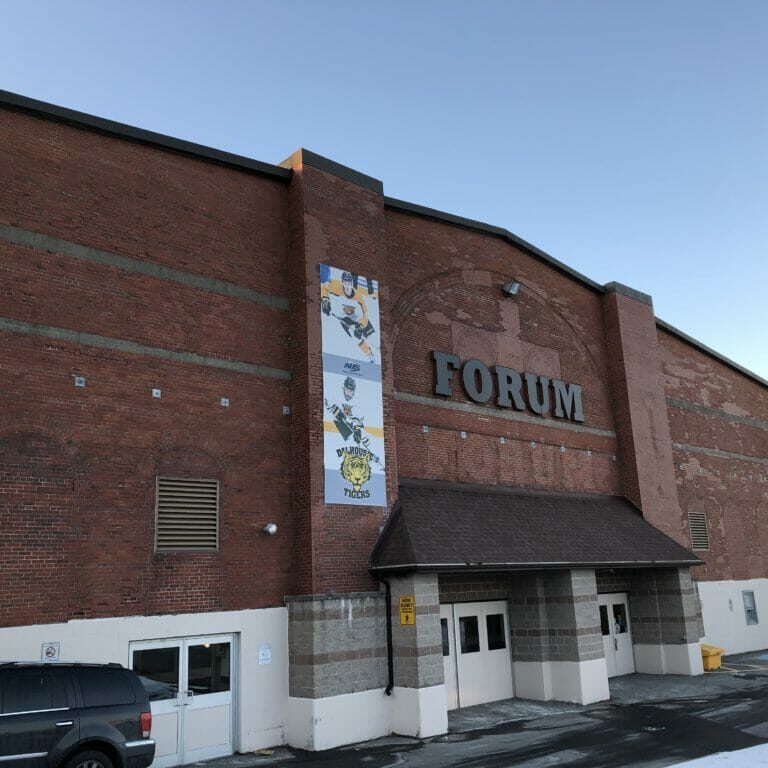
Dalhousie’s off-campus rink is a home only in name
“It just feels like an ice rental”
The Dalhousie University Tigers hockey teams have called the Halifax Forum rink home for eight seasons. However, Bruce Hartlin doesn’t feel like the rink is truly a home.
“It’s not really a happy atmosphere at the Forum,” said the men’s team’s public address announcer of 28 years. He spoke while gazing across thousands of empty seats after the first period of a Jan. 10 Tigers men’s hockey game. The Forum can hold about 6,000 spectators for hockey.
“The building size is part of it, but [being off-campus] has made it hard to get people to come out,” he added. “At the Saint Mary’s [on-campus] arena, there are probably 500 to 600 people there, compared to 250 here.”
To be exact, this game attracted 327 viewers. The next night at the Dauphinee Centre, SMU’s rink that opened in the fall, 768 people attended out of a possible 1,200.
Dalhousie’s previous on-campus facility, the Dalhousie Memorial Arena, was demolished in 2012.
A pressure on Dalhousie to find an on-campus arena is apparent. With SMU moving from the Forum to campus this year, Dalhousie men’s hockey is only team in the Atlantic University Sport league to not have one. Two other schools in the women’s circuit, Mount Allison University and St. Thomas University, play away from campus.
Moving back to campus, Hartlin said, wouldn’t only be more accessible to students and fans, but would help players feel more at home.
“The players want to walk to the rink in five minutes instead of taking their vehicles or taxis uptown for a home game. Truly, instead of a home, it just feels like an ice rental,” he said.
Brad Crossley played with the men’s Tigers from 1984 to 1986 and continues to attend games to watch his son, Brett, play with Dalhousie. He also coached Dalhousie in 2007-08. He stressed the advantages players have with an on-campus rink.
The team “drew more crowds, yes, but they felt more of a part of the campus community,” Crossley said. “After class, the players could just walk to the rink and use its facilities. It’s nice to have your own rink.”
“The Memorial Arena and its people felt more like a family,” said Hartlin. “It was a lot more fun. “The spectators came more, plus we were involved with everyone more, especially the rink staff. It was a great gathering.”






